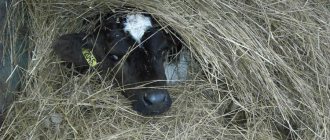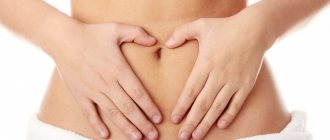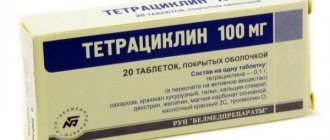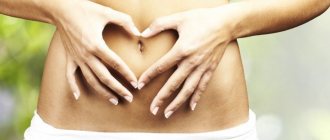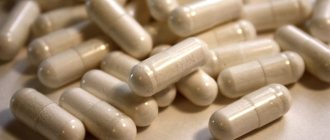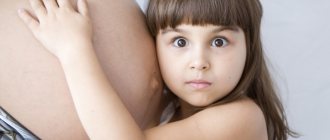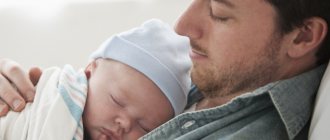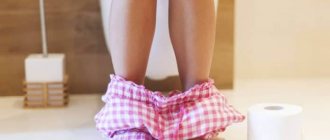Prescribing strong drugs such as antibiotics to children can cure dangerous infectious diseases. There is no way to do without antibacterial agents. It is difficult to defeat pathogenic microorganisms with the power of immunity alone; outside help is needed. However, every medication has side effects. Diarrhea is often observed after antibiotics in a child. A set of measures combining the achievements of official medicine and centuries-old folk experience is called upon to bring the baby out of this state.
Causes of diarrhea after taking antibiotics
The appearance of loose stools after taking antibiotics is an almost obligatory reaction of the body. This is due to the peculiarity of their action.
The task of any antibacterial drug is to destroy microorganisms. However, for most diseases, especially inflammatory ones, broad-spectrum medications are prescribed. They effectively eliminate pathogenic microorganisms, but, unfortunately, they also have the same effect on beneficial ones that populate the intestines. The disappearance of the latter makes it impossible to fully digest food and leads to the development of severe dysbiosis.
Diarrhea in a child due to taking antibiotics occurs for the following reasons:
- The effect of aggressive drugs on the gastric mucosa causes severe irritation and disrupts the functioning of the organ. Sometimes this is enough for a child to develop diarrhea after using an antibiotic.
- The destruction of not only pathogenic, but also beneficial microorganisms leads to dysbacteriosis. To ensure the breakdown of the resulting nutrients and their normal absorption by the intestinal walls, many different bacteria function here. In their absence, diarrhea develops against the background of impaired absorption.
- When taking antibiotics, due to disturbances in the motility of the gastrointestinal tract, food is poorly digested, and food remains stagnate in the child’s intestines and begin to rot, which leads to diarrhea. The disorder is accompanied by increased flatulence, belching, and severe abdominal pain.
- Diarrhea from antibiotics in both adults and infants can be a consequence of an allergic reaction. As a rule, the matter is not limited to diarrhea: vomiting, headaches, and skin rashes appear. Such situations are not uncommon in cases where you need to act quickly, and you have to use not a highly specialized drug, but a broad-spectrum antibiotic.
- Pseudomembranous colitis can also cause diarrhea. It is rare, but is one of the most dangerous complications. Caused by the proliferation of a specific microorganism against the background of an imbalance in the microflora.
Important! If a baby develops diarrhea, vomiting, or a fever after using antibiotics, you should immediately consult a doctor to change the prescription.
Analysis for dysbiosis in infants
When considering the dangers of antibiotics for a newborn child, first of all it is necessary to remember the high risk of developing dysbiosis. In children's intestines, the beneficial microflora is very vulnerable, which means that the active substances of drugs of this kind will destroy not only harmful microorganisms, but also bifidobacteria and lactobacilli, which are essential for digestion. Therefore, if there are corresponding symptoms (diarrhea, constipation, flatulence), infants are often prescribed a stool test for dysbacteriosis, which includes:
- coprogram - assessment of enzyme activity in the digestive system;
- culture for opportunistic microflora - determination of the number of bacteria that adversely affect the functioning of the gastrointestinal tract;
- culture for dysbacteriosis - assessment of the susceptibility of beneficial and harmful microorganisms to medications.
To obtain reliable results, the analysis is carried out only after discontinuation of prescribed antibiotics, as well as laxatives, prebiotics and sorbents. Three days before collecting the material, it is necessary to stop introducing new foods into the baby’s diet, using rectal suppositories and cleansing enemas.
Exposure to antibiotics
Antibacterial drugs are prescribed after a special study - bacterial culture with sensitivity to certain antibiotics, which makes it possible to determine what exactly causes the disease and which drug has the best effect on the infectious agent. In practice, for inflammation, such a study is rarely carried out, and general medications are prescribed.
- Most often, diarrhea after taking antibiotics in an adult, a child, or even a newborn is observed when consuming representatives of the tetracycline group: Metacycline, Tetracycline.
- Fluoroquinolines are very dangerous for children - Ofloxacin, Levofloxacin. They are prescribed only to adult patients.
- The penicillin group - Amoxicillin, Flemoklav, also often cause the development of diarrhea. In addition, medications in this category are strong allergens.
- Macrolides cause the least harm: Azithromycin, Erythromycin.
The nature of diarrhea when taking antibiotics
Diarrhea due to antibiotics in a small child can be observed immediately, even during the course of therapy, or may appear a few days later. The intensity of diarrhea depends on the degree of disruption of the intestinal tract:
- Light form . Diarrhea is observed up to 5 times a day, accompanied by some abdominal pain, which goes away immediately after defecation. This option is considered symptomatic and goes away on its own. The child's condition does not cause concern.
- Medium form . The intensity of diarrhea increases - up to 15 times a day. In this case, there is a temperature, mucus and bloody clots may be observed in the stool, which indicates inflammation of the intestines. In such a situation, absorbents will be needed. At the very least, you need to replenish the loss of water and salts.
- Severe form . A child may develop a more severe form of diarrhea while taking antibiotics. In this case, the number of bowel movements per day can reach 30, and there are clear signs of dehydration and intoxication. The child has a fever. In such cases, urgent hospitalization is required.
Causes of diarrhea
Diarrhea (or diarrhea) is characterized by factors known to all: frequent and loose stools. The diagnosis of antibiotic-associated diarrhea may be due to several factors affecting stool:
READ ALSO: how to treat loose stools with blood in a child?
- the direct effect of the drug on the walls of the stomach and intestines, which is irritating;
- the occurrence of pseudomembranous colitis;
- the development of dysbiosis caused by the death of beneficial intestinal microflora.
Next, we will analyze each of the possible options for diarrhea caused by antibiotics. They all have different symptoms, the only thing they have in common is loose stools.
Irritating effect of antibiotics on the gastrointestinal tract
This factor is due to the special effect of some antibiotics on the smooth muscles of the stomach and intestines. These drugs include Erythromycin, which causes the intestinal muscles to work more actively, creating a laxative effect. Pediatricians believe that such a reaction of the body is normal and requires only symptomatic treatment. This type of disease differs from other types:
- intestinal upset occurs as soon as the child starts taking medication;
- the problem is mild, since the baby can only have stool up to 4 times a day;
- the abdomen is swollen, but there is no fever, pain, general health is satisfactory;
- The baby’s stool is of normal color, does not have green spots, white lumps, mucus, or blood (for more details, see the article: what to do if white lumps appear in the baby’s stool during breastfeeding?);
- diarrhea goes away on its own after you stop taking antibiotics.
Pseudomembranous colitis
This disease is quite rare, but requires maximum attention. It is characterized by prolonged diarrhea with green spots and mucus, abdominal pain, changes in laboratory parameters demonstrating increased leukocytosis. Stool analysis reveals a specific C. difficile toxin. This microorganism may be present in the intestines of healthy people, but there is very little of it there.
During therapy with antibiotics that inhibit the normal intestinal microflora, in some cases C. difficile may begin to multiply uncontrollably. During the process of reproduction, microorganisms release specific toxins that cause intestinal upset and more serious complications. Children under 6 years of age, as well as older people, are at risk.
Dysbacteriosis
This type of diarrhea most often occurs after a course of therapy. Diarrhea does not bother the child too much, there is no pain, there is no blood or pus in the stool, the temperature is normal. Babies under one year of age often experience green or black stools after taking antibiotics (we recommend reading: green, loose stool in a child). For the mother of a breastfed baby, pediatricians recommend waiting a few days without doing anything. There is a possibility that the intestinal microflora will recover on its own.
READ ALSO: high fever and loose stools in a child
Symptoms of a negative reaction to antibiotics
Signs of a violation also depend on the nature of the root cause:
- Bowel irritation . If, while taking antibiotics, their effect was limited only to irritation of the intestinal tract, then the child’s diarrhea appears in a mild form and is not accompanied by anything other than abdominal discomfort. In such cases, the main efforts are directed not at normalizing stool, but at restoring the intestines.
- Dysbacteriosis . With dysbacteriosis, the symptoms of the disorder include flatulence, vomiting reflux, and severe belching. The abdomen is painful on palpation and the stool changes color, but there is no mucus, pus or blood clots. If dysbiosis appears in a breastfed baby, it is recommended to wait a few days without stopping the usual feeding regimen. In most cases, breast milk ensures the restoration of microflora, and diarrhea stops on its own.
- Colitis . With colitis, the stomach becomes very swollen. In addition, diarrhea is accompanied by vomiting, severe pain, and fever up to +38.8°C.
- Allergy . Allergies may cause skin rash, vomiting, and breathing problems. In such cases, symptoms appear very quickly and require immediate attention.
Important! To avoid diarrhea when treated with antibiotics, the latter can be taken not orally, but by injection.
Treatment for diarrhea
If a child develops diarrhea after taking prescribed antibiotics, restorative treatment is necessary. Diarrhea is not only unpleasant, but also threatens dehydration and poor stomach function, so you need to get rid of it.
Diarrhea after antibiotics, both in older children and infants, requires the following treatment:
- At the first stage, it is necessary to restore the salt balance. With diarrhea, the body loses a lot of fluid and salts; in order to replenish them, you need to drink a lot during illness. Weak warm tea, dried fruit compote, and jelly are suitable. If dehydration is severe, then purchase a pharmaceutical drug from which a solution is made - Regidron, Humana Electrolyte. You can prepare the solution yourself by diluting a teaspoon of salt and soda in 1 liter of water and adding sugar. The effectiveness is no less than that of ready-made medications. It is important that the child receives the right amount of fluid. In this case, you need to take into account the baby’s body weight.
- Antibiotics destroy pathogens, but do not remove them from the intestines. To get rid of diarrhea, after finishing taking the antibiotic, absorbents are used for children, for example, Smecta or Enterosgel. Babies under one year old can take up to two sachets of Smecta or 1 teaspoon of Enterosgel per day. Older children should be given 4 sachets of Smecta and up to 5–10 g of Enterosgel per day.
- The third stage is the restoration of microflora. Its essence comes down to the colonization of the intestines with artificially obtained beneficial bacteria: bifidobacteria, lactobacilli, and lactic acid streptococcus. They can also be obtained from food, but in preparations they are in concentrated form and act faster. The most famous include Bifidumbacterin, Bifiform, Hilak Forte, Rotabiotic. They begin to take them at the stage of treatment with antibacterial drugs, since restoration of the microflora takes a lot of time. The usual probiotic dose is 2 capsules per day for a child over 2 years of age. Take medications regardless of meal times. The minimum course takes 2 weeks
Important! Diarrhea in an infant after taking antibiotics can be treated not only with Smecta, but also with Polysorb. Analogs are no less effective than an expensive drug.
Diet for diarrhea
Treatment of diarrhea includes following a certain diet:
- On the first day of diarrhea, it is ideal to limit yourself to drinking only: compotes, tea, jelly, weak broth.
- On the second day you can give rice water. If there is no vomiting, add rice and baked potatoes to the diet.
- In the following days, it is allowed to give porridge with water, vegetable soups and purees, and low-fat cottage cheese.
- Boiled meat and fish are included in the diet no earlier than 7 days after the start of treatment.
- The only fruits allowed are banana and applesauce in small quantities. The diet for one-year-old children also allows for crackers and drying.
- It is preferable to give any food in the form of purees to reduce the load on the gastrointestinal tract.
- As soon as the diarrhea decreases, fermented milk products are introduced into the diet. They contain natural probiotics and stimulate the growth of healthy microflora.
- It is prohibited to consume carbonated water, fruit drinks, sweets of any kind, sausages, fatty and smoked foods. Whole milk is also not consumed.
Important! The exception is breast milk. In this case, the mother must comply with the restrictions listed above.
Between feedings, the child should be given rehydration solutions in small portions - 1 teaspoon every 5-10 minutes. For bottle-fed infants, for the first 2 days the finished milk formula is diluted with water in a ratio of 1:2. On days 3-4, the milk is diluted in a 1:1 ratio, and then gradually returned to a normal diet.
Probiotic complexes for stool restoration
BAK-SET baby and BAK-SET forte are new generation multiprobiotics. British preparations contain live beneficial bacteria that are resistant to the acidic environment of the stomach. Tested strains of microorganisms of original origin enter the intestines in full and restore the balance of microflora. With a course of taking the drug, stools are normalized, digestion is improved, and immunity is increased. You can buy complexes at the pharmacy. Instructions are in the package and on our website.
The food that an adult eats moves through the gastrointestinal tract, gradually being digested and absorbed. The digestive system mechanically and chemically processes foods to make them as fit as possible.
In the oral cavity, food is mechanically crushed during chewing. Then it enters the stomach in the form of a food mixture. Chemical processing of food occurs with the help of gastric juice and the enzyme pepsin.
The semi-liquid pulp then moves into the duodenum, where it is exposed to bile, intestinal juice and digestive enzymes. The food then moves through the small intestine. This is where nutrients are absorbed into the circulatory system.
The remains of the food mixture move to the large intestine. In the lower part of the digestive tract, the remaining liquid is absorbed and feces are formed.
Prevention
Treating a child is more difficult than preventing diarrhea. To do this, you need to follow the following recommendations:
- Do not take medications on an empty stomach unless instructed to do so.
- During treatment, viscous foods should be included in the diet: oatmeal, jelly, very soft mashed potatoes.
- It is worth immediately eliminating all foods that irritate the intestines so as not to provoke the disorder. This is especially true for fatty foods and confectionery products. When poorly digested, the latter begin to ferment in the intestines, which not only aggravates diarrhea, but also causes severe abdominal pain and flatulence.
Diarrhea is often a consequence of taking antibiotics. It cannot be completely excluded, but it is possible and necessary to alleviate the condition of a small patient and ensure a quick recovery.
What to do?
Green diarrhea does not necessarily indicate a serious illness. It can be caused by carbonated drinks with artificial colors.
But, if for several days the color of feces does not return to normal, diarrhea continues, it is necessary to find the causes and identify the disease in a timely manner.
For diagnosis, laboratory testing of stool is performed. A bacterial culture must be done to find out which bacteria are causing the indigestion. A blood and urine test will show changes in the functioning of the body as a whole.
A coprogram is a comprehensive study that allows you to accurately determine deviations from the normal functioning of the gastrointestinal tract.
After analyzing the chemical and microscopic examination, the doctor can accurately determine the reasons for the appearance of green stool.
First of all, you need to exclude foods that could change the color of the stool. If digestion does not improve after this, measures must be taken.
Treatment depends on the reasons causing the change in stool color. A diagnosis cannot be made based on one symptom. Only after the test results are appropriate therapy prescribed.
Treatment boils down to the following techniques:
- For diarrhea, Smecta, Regidron and other fixative drugs are prescribed;
- For cramps and pain in the abdominal area, painkillers are used;
- Acute intestinal infections are treated with antibiotics;
- To restore intestinal microflora, probiotics are used (Linex, Bifiform, etc.).
During treatment you must follow a diet. Smoked meats, fatty foods, foods high in coarse fiber, and alcohol should be excluded from the diet.
After a course of therapy, you should re-take the test.
Prevention of diseases, the symptoms of which are changes in the color of stool, comes down to simple rules of compliance with general rules of hygiene and sanitary standards for food preparation.
Changes in the color of stool do not only occur in children. Green stool in adults is often a cause for concern; the reason for the change in color of stool depends on many factors.
